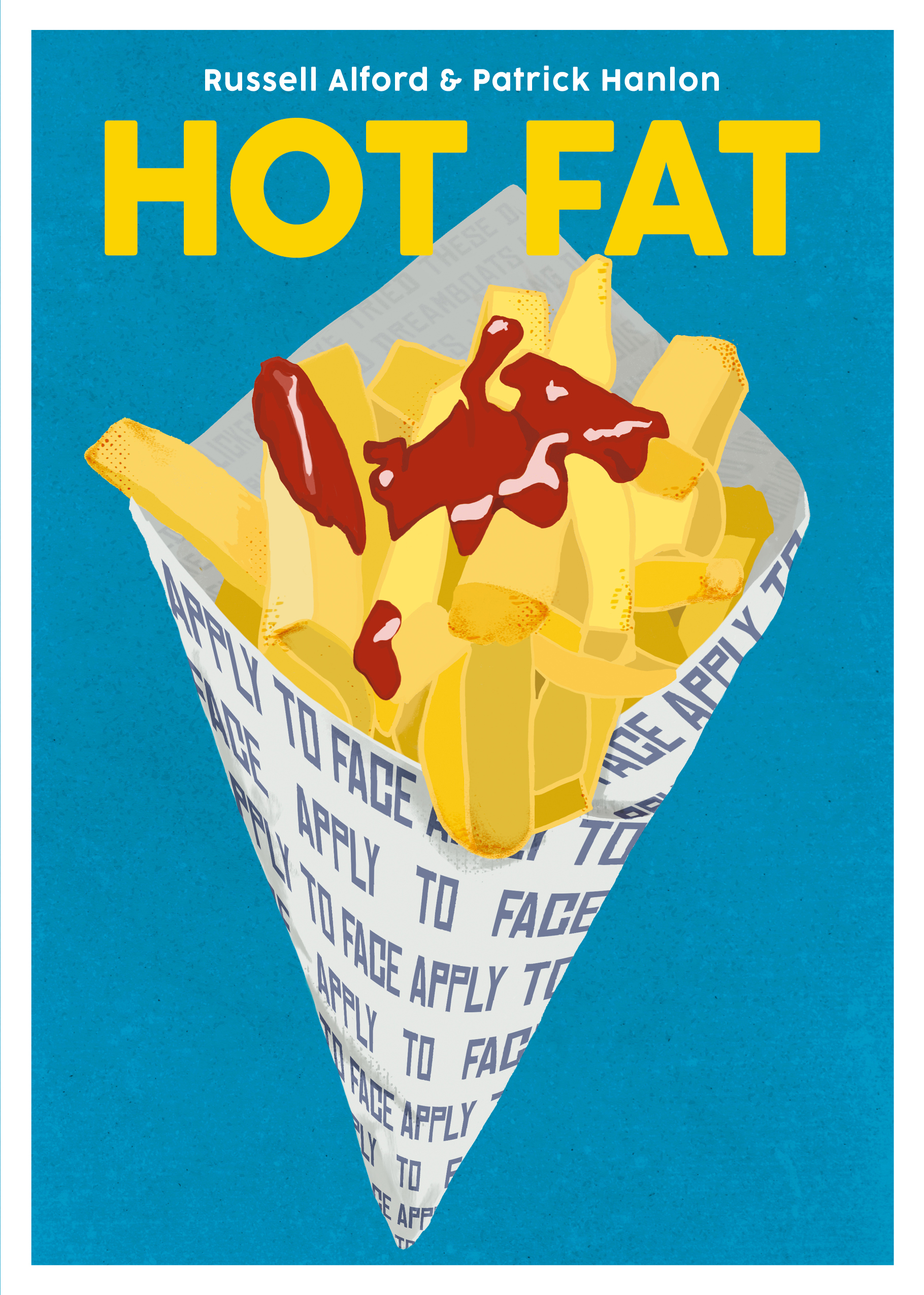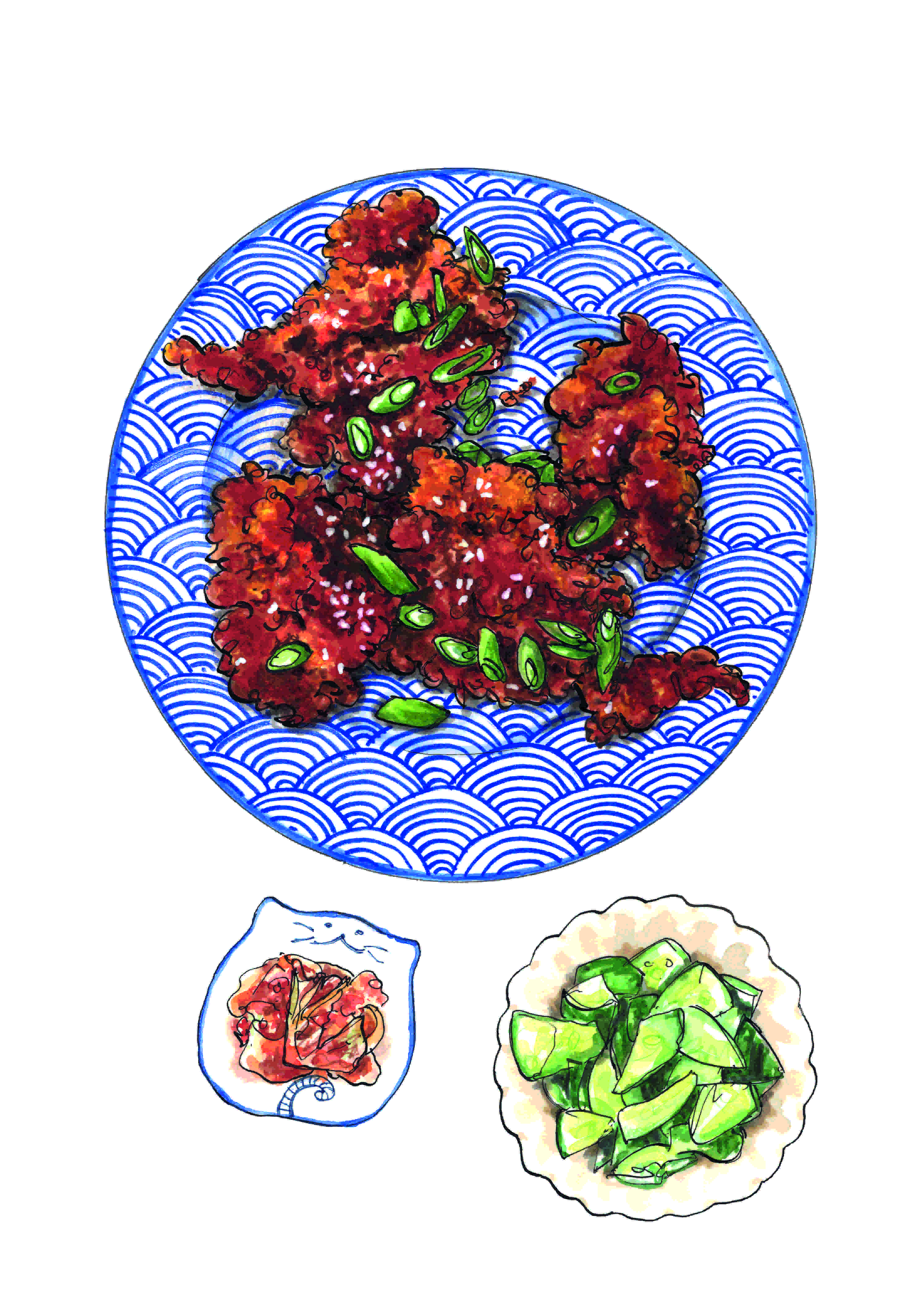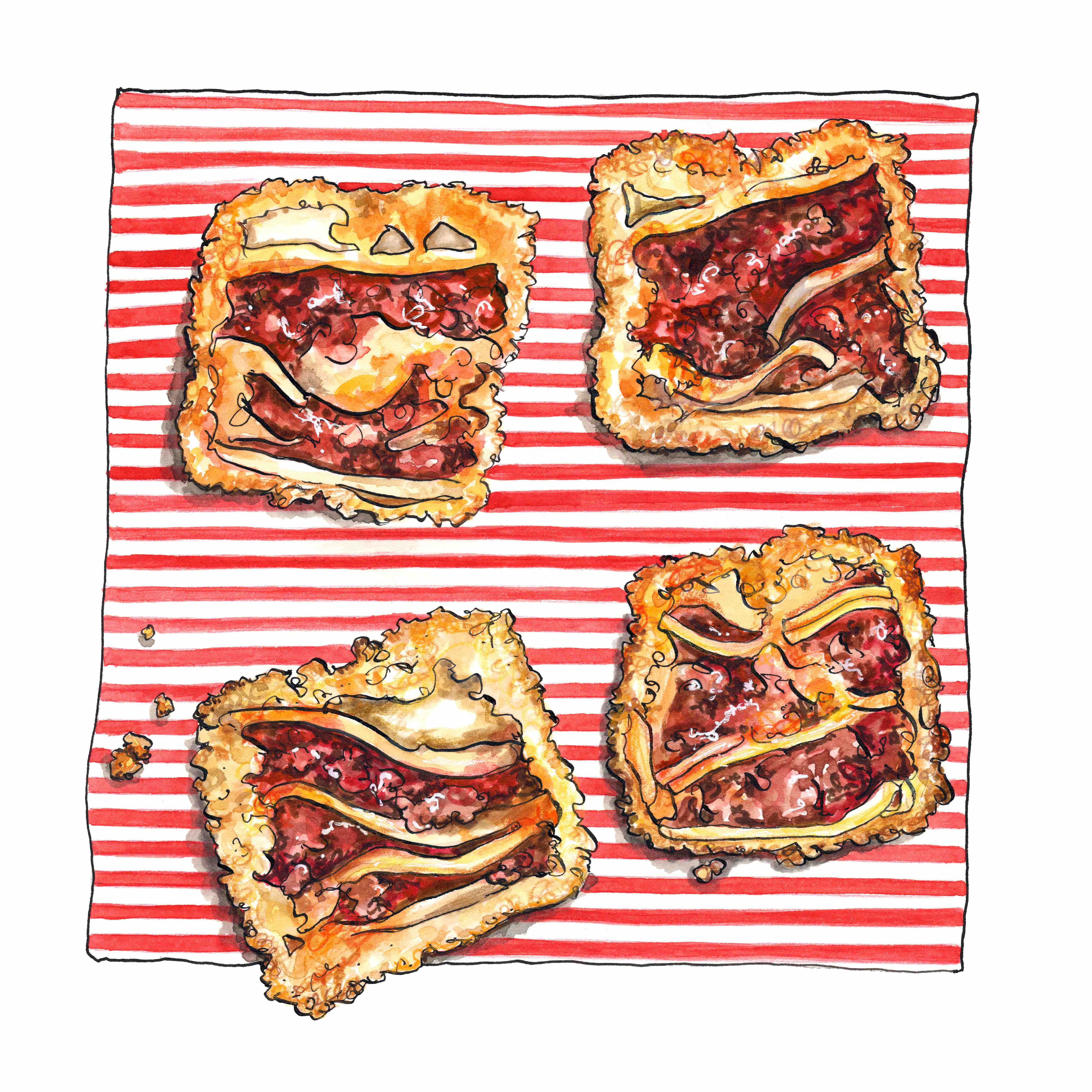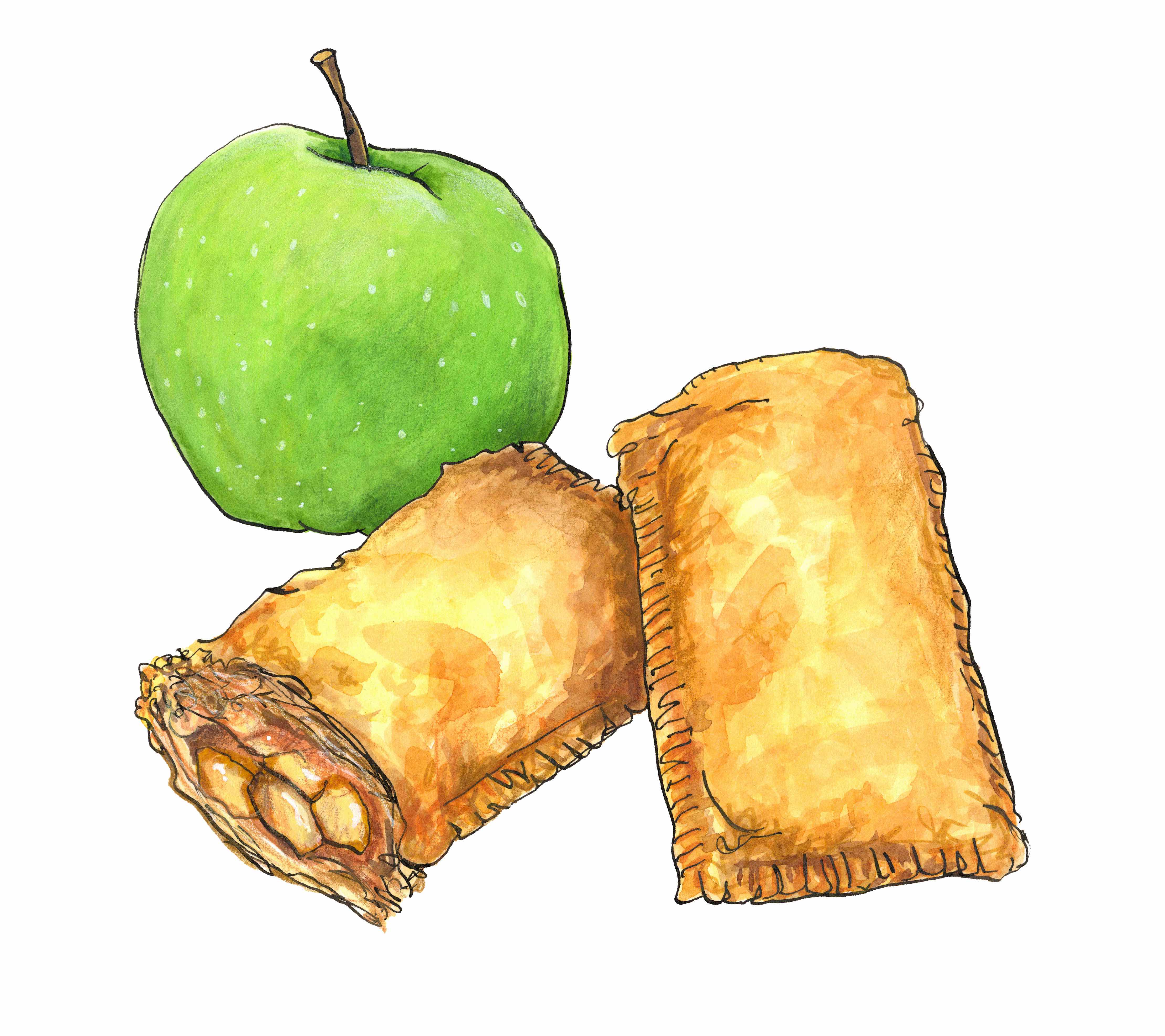Cookery Feature - Hot Fat
Where has the joy in food gone? This is the question that the Meath based food and travel writers Russell Alford and Patrick Hanlon, aka GastroGays, have been asking themselves of late. The joy in the crunch, the sizzle, the dip and the dunk; the joy in every delicious bite? Looking at all the wellness, weight loss, get fit and healthy eating books that have topped the bestseller lists over the last few years, you'd be forgiven for thinking that meals have become all about denial. What happened to enjoying some of life's most delicious morsels in moderation?
 In Hot Fat, their debut cookbook, fried food aficionados Russell and Patrick want to bring readers into a world of delicious possibilities. And it's not all beige! They've taken familiar favourites, chipper classics and the flavours we can't get enough of these days and have created the ultimate version of every recipe, from onion rings to oysters, donuts to corn dogs, prawn toast to the perfect potato crisps.
In Hot Fat, their debut cookbook, fried food aficionados Russell and Patrick want to bring readers into a world of delicious possibilities. And it's not all beige! They've taken familiar favourites, chipper classics and the flavours we can't get enough of these days and have created the ultimate version of every recipe, from onion rings to oysters, donuts to corn dogs, prawn toast to the perfect potato crisps.
'Hot Fat is ultimately about pure, unadulterated, edible joy,' the authors say. 'We were very conscious to avoid attaching any negative connotations or emotional charge to any of the recipes or ingredients, so you won't find phrases like "guilty", "dirty", "cheat" or even "fakeaway" in the pages of our book.'
Russell and Patrick are quick to point out that this is not an everyday cookbook, of course. This is food for fun, for celebrating and for special occasions, for those times when you want to lean into the most delicious possibilities the kitchen can afford.
*** Blasta Books #2: Hot Fat by Russell Alford and Patrick Hanlon (72pp A5 hardback, €15) is the second in a series of four new cookbooks published by Blasta Books. Widely available, or buy online here. Until the end of 2022, 1% of the net profits from all sales of Blasta books and merchandise will go to UNHCR, the UN Refugee Agency.
RECIPES
 Korean fried chicken
Korean fried chicken
Serves a greedy 2
We make no apologies for the fact that we’re led almost exclusively by our tastebuds when we travel, pinpointing bucket list bites and food and drink experiences we *need* to discover, squeezed into every second of exploring. A recent two-week trip to South Korea was happily spent between Seoul and Busan chowing down on Korean fried chicken several times daily to find the best. Sofie and Garret of Chimac in Dublin gave us their own blueprint for the best-found fried chicken in Seoul (and if you're in Dublin, we really recommend trying their versions!).
What makes KFC different? A couple of things: crucially, a blend of flours and starches and it’s double fried, the combination of which results in a shatteringly crisp coating that is then smothered in a fiery, punchy, sticky, crimson-coloured sauce that still retains its crisp as you eat. Talk about finger-lickin’ good! This is next level – napkins at the ready.
6–8 boneless, skinless chicken thighs
300ml buttermilk
2 tsp gochugaru or paprika
sunflower or vegetable oil, for deep-frying
FOR THE COATING:
60g plain flour
60g rice flour
60g potato starch or cornflour
1 tsp baking powder
sea salt and freshly ground black pepper
FOR THE SAUCE:
4 tbsp rice wine vinegar or Shaoxing rice wine
2 tbsp gochujang
2 tbsp sriracha
2 tbsp tomato ketchup
2 tbsp caster sugar
1 tbsp sesame oil
1 tbsp aekjeot or nam pla fish sauce
1 tbsp gochugaru
1 tbsp honey
1 tbsp butter
TO GARNISH:
sesame seeds
spring onions, sliced into thin lengths or on an angle
thinly sliced or chopped fresh red or green chilli
Cut each chicken thigh into two or three pieces to make bite-sized chunks and season with salt. Whisk the buttermilk and gochugaru or paprika together in a large bowl or baking dish. Submerge all the chicken in the buttermilk, cover with cling film and marinate in the fridge for a good 4–6 hours (leaving it overnight is fine too).
When it’s time to cook, remove the buttermilk-brined chicken from the fridge about 30 minutes before frying. Heat the oil in your deep-fryer to 150°C.
Combine all the coating ingredients in one bowl. (If you’ve run out of baking powder, use 60g self-raising flour instead of the plain flour.)
Working quickly and without shaking off too much of the buttermilk, dredge the chicken pieces in the flour mix, ensuring a generous and even coating. Working in batches, add each piece directly into the fryer and cook for about 5 minutes, until cooked through and light golden. Remove from the fryer and set aside on a wire rack set over a baking tray lined with kitchen paper while you cook the rest of the chicken.
When all the pieces have had their first fry and have been drained, crank up the temperature of the oil to 190°C.
Meanwhile, put all the sauce ingredients in a saucepan set over a medium heat and bring to the boil, then drop down to the lowest heat setting and give it a stir every so often just to keep it warm and pourable.
Fry all the chicken for a second time for 90 seconds to 2 minutes, until it looks incredibly crisp and has darkened in colour. Depending on the size of your fryer basket, you may need to do this in two batches.
Place the chicken into a large heatproof bowl and pour over all the sauce, tossing to coat each piece. The chicken will soak up the sauce but still retain its crispness.
Plate up with a generous sprinkle of sesame seeds, sliced spring onions and fresh chilli on top. Alternatively, serve in a steamed bao or as a burger. Kimchi or some sharp pickles are the ideal supporting side act or you can go all out on the whole banchan experience of a table laden with small side dishes.
From Blasta Books #2: Hot Fat by Russell Alford and Patrick Hanlon
€15, published by Blasta Bookshttps://blastabooks.com/
 Lasagne bites recipe
Lasagne bites recipe
Makes 6–8
You may think we’ve gone down a weird path with this one, but hear us out! Cookbooks can have this compulsion to instruct you to make everything from scratch, but sometimes convenience needs to be encouraged to get the job done. So be kind to yourself and take the easy route here. Pop into the supermarket and get your paws on the best ready-made lasagne you can find, then you’re going to create culinary magic by portioning it up and deep-frying it. Think mac ’n’ cheese bites, but better. Think oozy, creamy, rich lasagne but hand-held and crunchy. The ideal little bar snack, indulgent treat or crowd-pleasing canapé, we bet you never thought lasagne could be this lavish!
1 ready-made beef lasagne (about 400g)
sunflower or vegetable oil, for deep-frying
2 tbsp plain flour
1 large egg
1 tbsp milk
50g panko breadcrumbs (or fine dried breadcrumbs)
10g freshly grated Parmesan, Grana Padano or Pecorino cheese
flaky sea salt and freshly cracked black pepper
Get your pre-made lasagne from the supermarket. Remove the cling film or other wrapping, but with the lasagne still in its foil tray, use a sharp knife to cut it into roughly 4cm squares, as if it’s a sort of traybake. A 400g lasagne will yield around six nuggets, while a larger one may get you eight to 10. Cover the tray with a sheet of cling film and place in the freezer for about 90 minutes to 2 hours to solidify a bit.
Heat the oil in your deep-fryer to 160°C.
Prepare your pané station: put your flour in one bowl. In another, whisk the egg and milk together. In a third, combine the breadcrumbs with the cheese and some freshly cracked black pepper. (You would sprinkle, grate or twist these over a finished pasta dish, right? So why not include them in the coating?)
Take the now semi-frozen lasagne out of the freezer and carefully remove the pre-cut cubes. One by one, place each lasagne bite into the flour, then into the egg, covering all six sides. Smother in the breadcrumbs and cheese, then return it into the egg, and again into the breadcrumbs. The double coating ensures there shouldn’t be any leaks.
Working in batches, gently lower into the fryer, shaking the basket slightly to ensure it doesn’t stick. Fry for 8–10 minutes, depending on the thickness of your lasagne. If a little protrudes out of the top, don’t worry. You’ll have to turn them around about every 2 minutes to ensure even coverage.
Remove from the fryer and place on a wire rack set over a baking tray lined with kitchen paper to absorb any excess oil. Leave to stand for about 2 minutes, as they will still be molten inside! Season with a little flaky sea salt and black pepper on top before serving.
From Blasta Books #2: Hot Fat by Russell Alford and Patrick Hanlon
€15, published by Blasta Books https://blastabooks.com/
 Apple hand pies recipe
Apple hand pies recipe
Makes 6
Hand-held desserts, what a concept! This crunchy, crisp, hand-held pie sings with its sweet spiced filling and is super easy to put together. You can play around with your choice of fruit (rhubarb, plum, cherries), but good old green apple is the ultimate classic.
3 medium green apples, peeled, cored and cut into small cubes
50g light brown sugar
juice of ½ lemon
1 tbsp cornflour
1 tbsp ground cinnamon
½ tsp ground nutmeg or mace
¼ tsp ground cardamom
fresh sunflower or vegetable oil, for deep-frying
icing sugar, for dusting
1 sheet of pre-rolled puff pastry (all-butter if possible)
FOR THE CINNAMON SUGAR TOPPING:
80g granulated sugar
1 heaped tsp ground cinnamon
Add the cubed apples, brown sugar, lemon juice, cornflour and spices to a saucepan with a drop of water and cook down on a medium-low heat for 20 minutes, stirring every so often to avoid it sticking or burning. You don’t want it to turn to mush – you still want a little bit of texture and structure from the apples. Set aside to cool.
Heat the oil in your deep-fryer or a high-sided pan to 170°C. As this is a sweet recipe, we recommend using fresh oil rather than using a fryer full of oil that has been anointed with all manner of spicy chicken, onion rings and frites.
Sift a bit of icing sugar over a clean work surface and roll out the sheet of puff pastry to an even thickness (about 3mm), then cut into six rectangles about 10cm x 15cm.
In each rectangle, dollop 3 teaspoons of the filling along the long side, off centre, as you’re going to seal it by folding over the other half. Take a small pastry brush and dab a little water around the edges of the open pastry. Fold the empty side over the filling, then crimp with the tines of a fork to seal.
Working with a maximum of two pies at a time (depending on the size of your fryer), carefully place the pies in the hot oil and cook for 8 minutes.
Meanwhile, to make the topping, mix the sugar and cinnamon together in a wide, shallow dish or pasta bowl.
Remove the pies from the fryer and shake the basket to allow the excess oil to drain for a few seconds, then dredge the pie(s) in the cinnamon sugar while still hot. Set on a wire rack and enjoy after a couple of minutes – resist the temptation to dive right in, as the molten middle will make itself known!
From Blasta Books #2: Hot Fat by Russell Alford and Patrick Hanlon
€15, published by Blasta Books https://blastabooks.com/





There are currently no comments
Leave a comment
Not a member? Register for your free membership now!
Or leave a comment by logging in with: